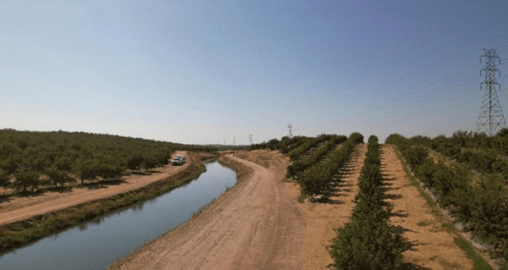TradeBacked: Transparency Will Make Global Trade and Supply Chains More Resilient, Socially Responsible
November 10, 2022 | TradeBacked
We need to know more about who is involved and what is going on at all points in the supply chain process. Digitalization is key to helping us achieve this level of transparency.
There is already a distinct line that divides time before the COVID-19 pandemic and two years after it started. It is the line where COVID exposed our fragility, not only as a species vulnerable to disease but as a global culture reliant on a complex web of interactions.
We want to lessen that fragility going forward, both to better protect ourselves against new viruses and to strengthen our global infrastructure, making it is less vulnerable to any new crisis that comes along.
The pandemic highlighted that global trade and supply chains are the place to start shoring up our resilience. Before COVID-19, few consumers gave much thought to the global manufacturing and delivery system that brought them the goods on store shelves, at gas pumps, or stocked in hospitals and pharmacies.
Shortages of key medical goods early in the pandemic, followed by supply chain issues that have persisted across a range of items ever since, have left everyone hyper-aware of the importance of that key global system. Multiple problems facing people in their daily lives are being explained by “supply chain issues.”
Those responsible for the various industries that rely on or operate within global supply chains were already aware of the fragility of the system before the pandemic. Efforts to offset those deficiencies had been ongoing before the first case was recognized.
The spotlight that the pandemic shone on supply chains has added to the urgency of those efforts. It has given us the opportunity to raise awareness of the potential for improvements that could advance other vital issues as well. Now that we are on the other side of that line in time, the pandemic can be a marker for the moment we started to get serious about the list of challenges we need to face.
Many would rank climate change at the top of that list. A 2016 study by McKinsey estimated that more than 80% of greenhouse-gas emissions and more than 90% of the impact of the operations of consumer goods companies on air, land, water, biodiversity, and geological resources came from their supply chains.
It is clear that supply chains need to be the focus for any serious climate change alleviation. But other globally important issues need to be addressed through supply chains too. Better run and more transparent supply chains will help guarantee that unfair labor practices are weeded out of the global trading system, that gender equity exists in the workplace, and that poverty reduction is a side effect of growth.
All of this is possible and attainable. Improving supply chains is the first step in getting it done and the first step in that improvement is better knowledge about how they work.
Digitalization will transform trade and supply chains but it won’t be an easy task. Many supply chains stretch to small suppliers who “often do not have sustainability expertise or resources, and they may be unaware of accepted social and environmental practices and regulations. They are also frequently located in countries where such regulations are nonexistent, lax, or not enforced at all,” noted a study on environmental and social standards within supply chains by Verónica H. Villena and Dennis A. Gioia in the Harvard Business Review in 2020.
The study noted that while the big multinational companies ultimately at the end of those chains may have strict practices in place to adhere to environmental and social standards, “They frequently don’t even know who their lower-tier suppliers are, let alone where they’re located or what capabilities they have (or don’t have).”
Transparency is key to improving supply chains. We need to know more about who is involved and what is going on at all points in the process. That is why digitalization is so important. Shift trade and supply chains into the digital world, away from the ponderous process of paper documentation that exists now, and you have a system that can be better measured, monitored and regulated.
Digitalization will transform trade and supply chains but it won’t be an easy task. Industry and regulators need to agree on common systems and practices, governments need to upgrade or alter laws that now insist on trade deals being tracked by a paper trail, and tools like distributed ledger technology for transactions and QR codes rich in information about traded products need to become normalized.
Once we can see deep into supply chains we can make sure they are resilient and ready to handle future challenges.
To do this, we need to use digitalization to make trade and supply chains greener and more socially responsible, and use them as a tool to improve a wide range of issues.
Problems in supply chains have brought them into the public discussion. Those of us involved in trade and supply chains need to demonstrate that supply chains can and should be the focus for solutions, not just for temporary delays and shortages, but for some of the biggest problems we face.











